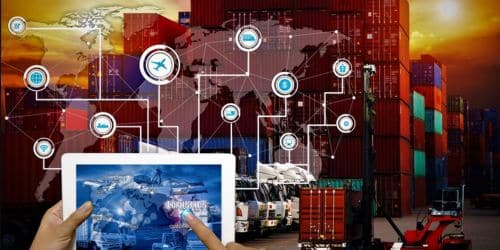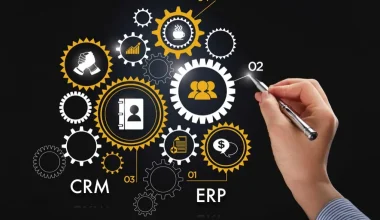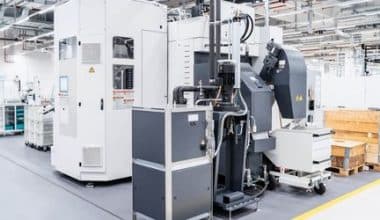The management of the supply chain is a critical process for companies, as it leads to cost reduction and a more efficient production cycle when the supply chain is optimized. Optimization, in this context, simply means employing the necessary processes and tools to combine and analyze data from multiple systems to gain clear insights into the production and distribution of goods—this is known as supply chain analytics. As you read on, you’ll learn about supply chain analytics, its types, and why it is an important phenomenon for every production company.
Supply Chain Analytics: What is it?
The term supply chain analytics refers to the techniques and tools employed to combine and scrutinize data from various systems with the aim of acquiring knowledge about the acquisition, production, and dissemination of goods. Integrating data from both supply chain management (SCM) and enterprise resource planning (ERP) systems provides a holistic perspective of the logistics network, enabling the prediction and enhancement of performance through broader insights.
Upon integration and centralization, the data can be subjected to processing and subsequently presented through the medium of data visualizations. The aforementioned visualizations facilitate comprehension of the interdependence between various systems and processes, elucidating the causality and suggesting viable measures to optimize the efficacy of the entire supply chain.
In other news, supply chain analytics is the computational examination of the various systems and processes that are implicated in the supply chain of a business organization.
Through the integration of data from multiple sources, including inventory management and procurement systems, analysts can examine the sourcing, assembly, transportation, and delivery of materials and component parts to end consumers as finished products or services.
The elements of the supply chain may comprise various entities such as manufacturers, suppliers, storage facilities, logistics firms, transit companies, depots, and merchandisers.
How Does Supply Chain Analytics Work?
The utilization of a cloud-based, comprehensive data integration and analytics platform is the driving force behind supply chain analytics. The aforementioned platform facilitates the management of data throughout its entire lifecycle, while also enabling the execution of requisite forms of analytics.
The following is how it works:
Data is derived from operational systems that manage supply chain activities such as procurement, inventory, orders, warehousing, fulfillment, and transportation. Third-party data from suppliers, shippers, and retailers can also be included.
This data is extracted, converted, and integrated into a repository, generally in the cloud, such as a data warehouse or data lake. This provides you with a detailed picture of your logistics network. Your supply chain data analytics platform makes it simple to use this data for many types of analysis. You could, for example, employ supply chain predictive analytics to forecast returns and determine outstanding inventory.
Furthermore, your technology also allows you to construct interactive visualizations and dashboards that aid in the identification of patterns and the development of insights into key performance indicators (KPIs) such as fulfillment performance, ideal inventory distribution, and delivery times.
Top products go even further, allowing you to use enhanced analytics capabilities like automated machine learning, predictive analytics, and prescriptive analytics, as well as embed your analytics into other applications. This yields insights on which you may act, as well as warnings and actions in other systems.
Qualities of a Working Supply Chain Analytics
There are many various types of enterprises and supply chain structures, but every efficient supply chain analytics system must contain the following features:
#1. Security
Security supply chains are made up of sensitive operational data about a company. As a result, it’s critical to employ industry-standard security measures and guarantee access to your data is restricted.
#2. Collaborative access
While data must be safeguarded and access limited, it should also be simple for analysts to exchange in order to aid in the collaborative and continuous process of building models and visualizations. In addition to promoting creativity, it will eliminate duplication of effort, especially with data pipelines, which are frequently easily extrapolated.
#3. Digital modeling
The physical supply chain operations should be mirrored in a digital modeling system so analysts may readily iterate and experiment before the organization makes significant investments in modifying the physical systems.
Read also: DIGITAL SIGNATURE PROVIDERS: Top E-Sign Software & Reviews 2023
#4. Data visualization
Analysts use data visualization to display raw datasets in an easy-to-understand visual style. Bar charts, histograms, and line graphs, for example, are all visualizations that may be created to indicate how different components of a supply chain are performing.
#5. Integration
Analysts should pull information from external sources that affect their supply chain, such as public weather datasets or feeds from social media APIs, in addition to internal interfaces that pull data from things like inventory management systems.
#6. Comprehensive assessment
Supply networks are more than just raw materials and shipping companies. Any data-generating process element should be integrated to ensure that analytics calculate all linkages and correlations that ultimately impact strategic business choices.
Types of Supply Chain Analytics
There are five forms of supply chain analytics.
#1. Predictive analytics
Predictive analytics employs statistical analysis, frequently computing correlations between numerous datasets to find some form of causal relationship, in order to create future projections.
#2. Descriptive statistics.
The technique of evaluating historical data is known as descriptive analytics. The outcome is frequently used to answer the question “what happened?” or “what is happening?” in a company’s operations.
Understanding the past state of everything from inventory levels to delivery delays to consumer feedback is required in the context of the supply chain. These many elements can be inspected over time to see how they vary or change.
Read also Descriptive Analytics: Meaning, Examples & Steps, Simplified!!!
#3. Diagnostics analytics
Diagnostic analytics takes descriptive analytics a step further by attempting to comprehend the relationship between distinct data points. More broadly, it answers the “why” of the historical data revealed by descriptive analytics.
Consider the following scenario: If your descriptive analytics show low inventory levels that are unable to fulfill customer demand and slow supplier deliveries, your diagnostic analytics would attempt to discover whether the late deliveries caused a shortage in some crucial component, resulting in insufficient product manufacturing.
#4. Prescriptive analytics
Prescriptive analytics employs predictive analytics analysis to suggest probable actions based on estimates. Rather than simply displaying the facts, this type of analysis derives greater meaning from the data so that corporate executives may fix problems before they happen.
Read our article on Prescriptive Analytics Tools & Techniques: 9+ Best 2023 Options
#5. Cognitive analytics
Cognitive analytics is the application of machine learning and artificial intelligence to make sense of complicated and interrelated data. This sort of analytics essentially runs predictive and prescriptive analytics models on large datasets in order to understand associations that would be impossible for a human to manually experiment on.
A cognitive analytics model, for example, may attempt to map delivery delay and inventory data from diverse data sources in order to discover unanticipated linkages. This research could reveal a substantial link between growing natural gas costs in the winter. This discovery may prompt analysts to speculate that the suppliers’ input costs are putting a seasonal burden on their operations. A human analyst would struggle to traverse these seemingly random associations without the ability to do these wide types of regression analysis.
Why is Supply Chain Analytics Importance?
Many industrial firms, for example, rely on raw materials that fluctuate in price and supply over time as a result of larger macroeconomic, environmental, and climatic variables. Customer demand for the end product might fluctuate independently of raw materials due to reasons such as seasonality, weather, or other factors outside the manufacturer’s control.
Having supply chain data analytics systems in place can assist businesses in understanding how different supply and demand conditions affect factors such as inventory levels, delivery timeliness, and labor needs, allowing management to adjust operations in response to – or ideally in preparation for these changes.
What is the Difference Between Logistics and Supply Chain?
Logistics is concerned with the efficient and cost-effective delivery of commodities to customers. Supply chain management, on the other hand, oversees the transformation of raw materials into completed items as they move from supplier to production to warehouse to merchants and/or customers.
What are the 7 Supply Chain Functions?
The field of supply chain encompasses a wide range of professional opportunities, with the following key functional areas:
- Manufacturing.
- Purchasing
- Inventory Management,
- Demand Planning, Warehousing,
- Transportation, and Customer Service.
What are the Basics of SCM?
Supply chain management involves the following activities:
- Sourcing
- Planning and strategy formulation
- Transformation process
- Delivery and customer service
Conclusion
Supply chain analytics is a broad term that refers to the use of data to determine what happened, why it happened, and forecast the future state when a given action is taken or not taken.
Related Articles
- TAG MANAGEMENT: Definition, Design, Software, Company & Analytics
- WHAT IS DATA VISUALIZATION: Techniques, Tools, and Importance
- DATA ANALYST: Overview, Salary, Job, Resume & All You Need






